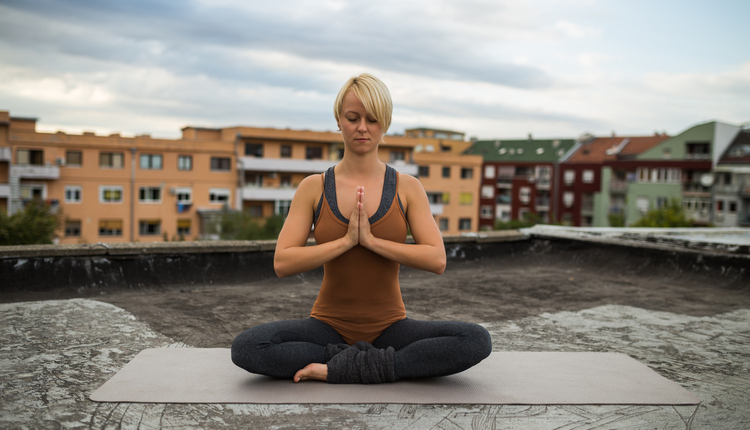Let's get real: We all know how to breathe since it's something that occurs automatically, spontaneously and naturally, so it seems silly to think that you can be instructed on how to breathe better, but it's true! One of the Five Principles of Yoga is Pranayama, a form of breathwork that delivers more oxygen to the blood and to the brain and the ability to control Prana, or the vital life energy. Pranayama Yoga goes hand-in-hand with performing the physical postures of yoga practice, but deep and enriching breathing also benefits other kinds of exercise.
Most people develop unhealthy habits without being aware of it. We slouch at our desks, which diminishes lung capacity and shortens the breath. We live in polluted or unhealthy environments that cause chaos with our respiratory system. During extremely tense situations, we may hold our breath or inhale shallowly, which causes stress to our systems.
When you instruct your clients during any type of physical activity, monitor and even modify their deep diaphragmic breathing for optimum athletic performance. Try the following exercises:
Ujjayi breathing -- With the healthiest yoga breathing, you can teach clients how to slowly and steadily breathe in and out only through the nose:
1. In a comfortable cross-legged position, or during a warm-up or cool-down, ask them to begin breathing in and out, slowly, only through the nose.
2. Tell them to start making a constrictive sound on the exhales from the back of the throat; imagine that they're fogging up a pair of sunglasses.
3. Once they're comfortable with the noisy exhale, apply the same throat sounds to all the inhales and allow each breath to last four or five seconds in, and another four or five seconds out.
Calming breath-- Another way to train your client's breathing is in the final three minutes or so of your session together, which will prepare them for a return to work and life in a more balanced way:
1. Sit or lie down with a pillow or rolled up towel under the neck and head. Ask your client to close her eyes and begin inhaling and exhaling in equal counts of four beats in and four beats out.
2. After 30 seconds or so, ask them to increase the duration of each inhale and exhale to five beats in and out; and progress slowly from there to six or seven beats each.
3. Ask them to hold their breath briefly at the top of the inhale and again and the bottom of the exhale while you monitor their breathing. Continue like this for another minute or so to ease stress and cultivate calmness.
Most people develop unhealthy habits without being aware of it. We slouch at our desks, which diminishes lung capacity and shortens the breath. We live in polluted or unhealthy environments that cause chaos with our respiratory system. During extremely tense situations, we may hold our breath or inhale shallowly, which causes stress to our systems.
When you instruct your clients during any type of physical activity, monitor and even modify their deep diaphragmic breathing for optimum athletic performance. Try the following exercises:
Ujjayi breathing -- With the healthiest yoga breathing, you can teach clients how to slowly and steadily breathe in and out only through the nose:
1. In a comfortable cross-legged position, or during a warm-up or cool-down, ask them to begin breathing in and out, slowly, only through the nose.
2. Tell them to start making a constrictive sound on the exhales from the back of the throat; imagine that they're fogging up a pair of sunglasses.
3. Once they're comfortable with the noisy exhale, apply the same throat sounds to all the inhales and allow each breath to last four or five seconds in, and another four or five seconds out.
Calming breath-- Another way to train your client's breathing is in the final three minutes or so of your session together, which will prepare them for a return to work and life in a more balanced way:
1. Sit or lie down with a pillow or rolled up towel under the neck and head. Ask your client to close her eyes and begin inhaling and exhaling in equal counts of four beats in and four beats out.
2. After 30 seconds or so, ask them to increase the duration of each inhale and exhale to five beats in and out; and progress slowly from there to six or seven beats each.
3. Ask them to hold their breath briefly at the top of the inhale and again and the bottom of the exhale while you monitor their breathing. Continue like this for another minute or so to ease stress and cultivate calmness.
Beth Shaw is the founder and creator of YogaFit Training Systems Inc. (www.yogafit.com) and is the author of YOGAFIT. Beth presents at all major yoga and fitness conferences and is contributor to fitness magazines and an animal rights advocate. She holds a BA in Business from Long Island University and numerous yoga, fitness and mind/body certifications.







